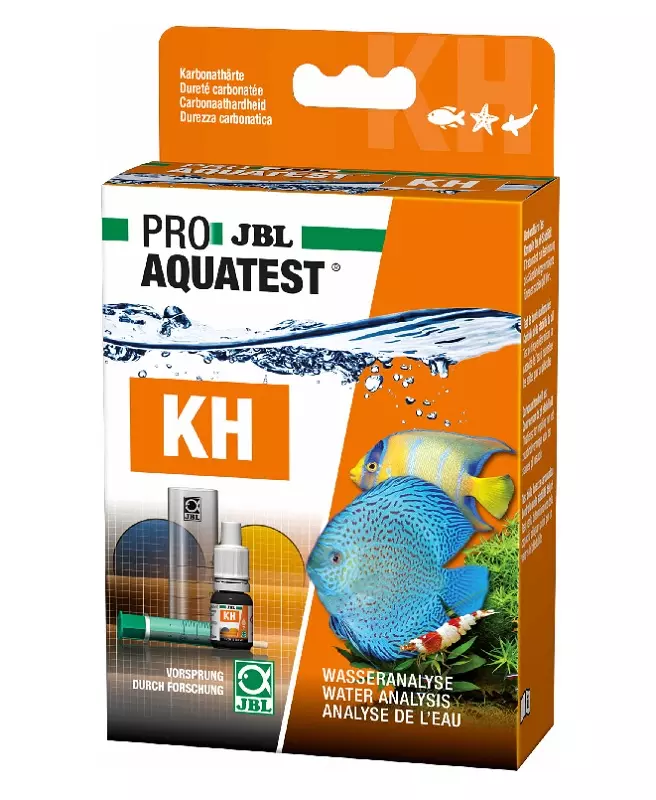JBL GH Test - GH quick test to determine the total hardness in freshwater aquariums and ponds
- Simple and reliable control of water values in ponds/aquariums. Determines the ideal total hardness for freshwater aquariums and ponds
- Colour change test: fill plastic cuvette with sample water, add reagent drop by drop until colour changes from red to green. Number of drops = level of GH (total hardness)
- When to use: for setting up a new aquarium: once a week
- Online Laboratory: regular control for a healthy aquarium/pond with conditions close to nature. JBL has water tests in the form of quick tests or colour change tests for every water analysis. Testing aquarium water for healthy, clear water
- Package contents: 1 quick test, GH Test. Incl. reagent and plastic vial. Refill reagent avaiable separately
Healthy aquarium/healthy pond with conditions close to nature
The right water values are dependent on the fish stock and the plants in the aquarium/pond. Even if the water looks clear it can be contaminated. With bad values diseases or algae can appear in the aquarium/pond. To maintain a healthy aquarium/pond with conditions close to nature it is important to check and adapt the water values regularly.
For each water analysis JBL provides water tests in the form of quick tests or colour change tests. These determine a certain value or several values in one go. With these water tests you can recognise algae problems and negative nitrate, nitrite, potassium, magnesium values etc.
Why test?
Depending on origin and consistency of the subsoil, water may contain varying quantities of alkaline earth salts, usually in the form of calcium and magnesium salts. General hardness, by definition, is the sum of calcium and magnesium ions suspended in the water. Most fish and plants thrive well at a general hardness of between roughly 8 and 20°dH. Excessive total hardness values, should, however, be counteracted by the appropriate measures.
JBL Online Laboratory
Regular control for a healthy aquarium/pond with conditions close to nature. Enter your water values into the JBL Online Laboratory and get an in-depth analysis of your values within seconds.
Recommended general hardness values:
Freshwater aquarium (community aquarium): 8-25 °dGH
Lake Malawi/Lake Tanganyika aquarium: 5-20 °dGH
Plant aquarium with few fish (aquascaping): 3-10 °dGH
Marine aquarium: not measurable with GH test because GH too high. Please test calcium and magnesium separately
Pond: 6-20 °dGH
| Variant: | Test set |
|---|
Login
11 September 2019 20:33
Tip-top
Tip-top












